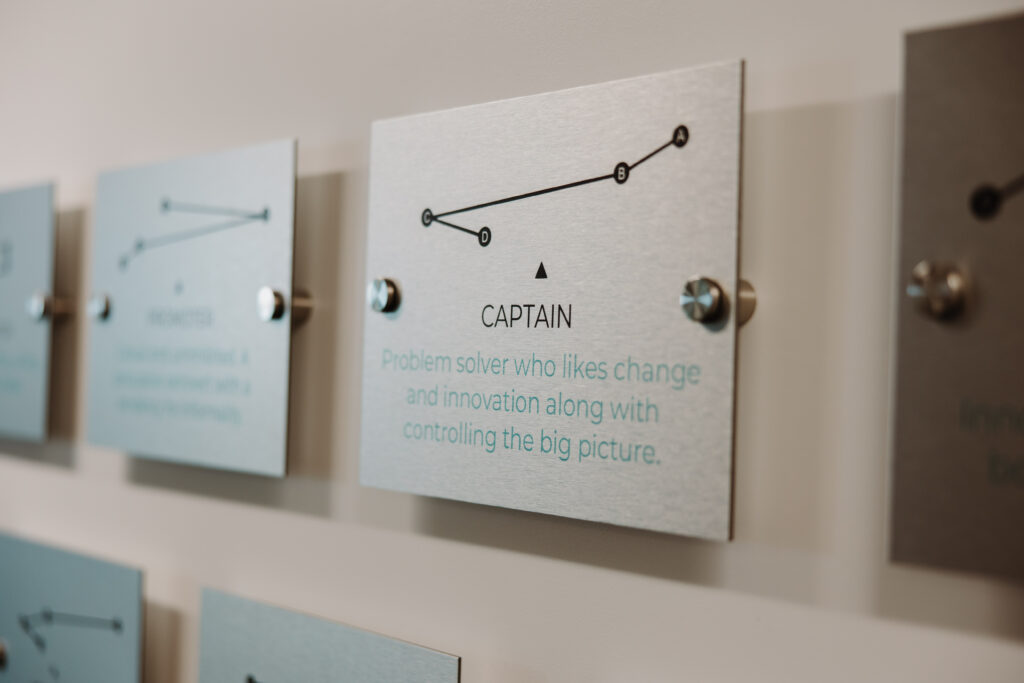
The Predictive Index Corporate Hook: What Does It Really Mean?
You’ve probably heard about the Predictive Index (PI) by now. Maybe you’ve taken the assessment, or maybe you’re wondering if it’s going to finally tell your boss how you prefer to be managed (yes–it will). The Predictive Index Behavioral AssessmentTM measures four key factors: Dominance, Extraversion, Patience, and Formality. And no, it doesn’t require a degree in psychology to understand it.
The PI is designed to help businesses, leaders, and teams get better at… well, everything. It’s all about leveraging data-driven insights to accelerate performance and growth. At work, PI is applied to predict how you’ll behave in various situations and how that will affect your performance. Will you take charge? Stay calm with routine tasks? Or maybe you’re a master of spreadsheets (and not just for budgeting your Starbucks addiction). The point is, PI helps leaders place people in roles where they thrive, and that’s where the infamous “Corporate Hook” comes into play.
What is the Corporate Hook?
Now, if you’re Googling “Corporate Hook,” you’re likely hoping it means you’re cut out for business. And you’re right—kinda. But there’s more to it than that. A Corporate Hook profile means you’ve got the perfect balance of low Patience and low Formality, with Formality winning out. Basically, you’re all about the big picture but can still flex enough to handle the details. You don’t sweat the small stuff unless, of course, the small stuff messes with your grand vision. Then you’re all in.

Think of the Corporate Hook as the professional’s Swiss Army knife. This behavioral drive is adaptable, not limited to a specific role or level. You’ll see it in leaders, salespeople, project managers, and even that one colleague who always knows when it’s time for a coffee break (truly a skill).
The Top Strengths of the Corporate Hook
Now that you’re intrigued, let’s break down why the Corporate Hook is so powerful in the workplace:
- Big Picture Thinking: You have a “yes” mentality, which means you don’t get bogged down by every single detail (because your low Formality, or “D,” keeps you flexible and going with the flow). Need to brainstorm a groundbreaking marketing campaign in five minutes? You’ve got this. But don’t ask for a deep dive into PowerPoint fonts—you’re thinking on a grander scale.
- Selective Detail Orientation: Sure, you might ignore some small stuff—until it directly impacts the outcome. It’s like when you’re planning a client presentation, and suddenly, you care deeply about every typo and slide transition. You’re not obsessed with the details in general, but you know when they count.
- Flexibility with Structure: Rules? Guidelines? You’re adaptable, which means you follow them when they make sense but aren’t afraid to bend them when it’s necessary for success. You’ll work within the system, but you’ll also tweak it when it suits you (because who doesn’t love a good shortcut?).
- Speed Without Sacrificing Outcomes: Moving at a fast pace is in your nature, but you also know when to slow down for decision-making (as long as it doesn’t stop you from taking action). You juggle priorities like a pro and still get things done without falling into analysis paralysis.
Explore more: What is sabotaging team performance?
Different Workstyles
From Overly Detailed to “Fly-Away” Visionaries
Workstyles vary across the board. Some people thrive on structure, while others treat it like a distant cousin they see once a year at Thanksgiving. High Formality or high “D” folks are the ones who always ask, “Wait, one more question!” They’re the detailed-oriented crew, making sure everything is buttoned up—down to the last pixel on a presentation slide.
On the other end, you’ve got the “fly-away D” people who are fantastic at visionary thinking but maybe not the best at filling out TPS reports (yes, we made an “Office Space” reference). They’ll figure it out later, but deadlines? Meh, let’s just say they’ve got a more “relaxed” approach.
As a Corporate Hook, you naturally bring a touch more structure to the table, without going into micromanaging mode. You’re like the middle ground between a high-level dreamer and the checklist-obsessed coworker who never misses a beat.
Tips for Working with a Corporate Hook Profile
Let’s say you’re managing someone with a Corporate Hook profile, and you’ve noticed they don’t always dive into every detail. Before you assume they can’t or won’t pay attention, here’s what you need to know:
- To Get Focus, Talk about Outcomes: Just because they’re not obsessing over every bullet point doesn’t mean they can’t pay attention. If the details affect the outcome, they’ll zero in like a hawk. So be sure to describe which details are important and why the structure matters to get them the outcome they seek.
- Give Guidelines, Not Handholding: Instead of expecting them to self-diagnose which details are crucial, tell them directly. Frame it around the why—what will happen if these details are missed, and what they’ll gain by paying attention. When they have an understanding of the guidelines, they’ll be ready to take action fast.
- Offer Flexibility with Boundaries: Set some bookends for them. Offer structure where necessary, but don’t micromanage. They’ll appreciate the freedom to operate within the lines you set.
Explore more: How to Manage Control Freaks
Reframing the Way We Approach Work
At the end of the day, understanding the Corporate Hook is about recognizing that not everyone thrives in the same way—and that’s okay. Rethinking how we approach work styles is key to unlocking the full potential of our teams and driving accelerated performance.
So, the next time you see someone who seems to gloss over the details, remember: they’re likely just prioritizing what matters to the bigger picture so they can delegate the fine print. We can all stand to take a step back and rethink our approach, embracing flexibility and adapting our work environments to suit a variety of styles. After all, data-driven leadership isn’t about a one-size-fits-all solution—it’s about leveraging the unique strengths of each individual to achieve accelerated growth and success.
Ready to embrace data-driven performance acceleration?
Take the first step toward embracing data-driven insights and optimizing your team performance.


